Canon 11-24mm f/4 L USM review
Canon 11-24mm f/4 L USM review, testo e foto by
Juza. Pubblicato il 03 Giugno 2015; 2 risposte, 18870 visite.
When I heard for the first time about the Canon 11-24mm, I thought that it was just one of these rumors that ends up in... nothing. It looked too good to be true: instead, nowadays I have the real product in my hands. The most extreme rectilinear wide-angle ever made, with a truly impressive angle of view of 126 degrees! I have tried it on the field to see how it performs and how it compares to cheaper alternatives.
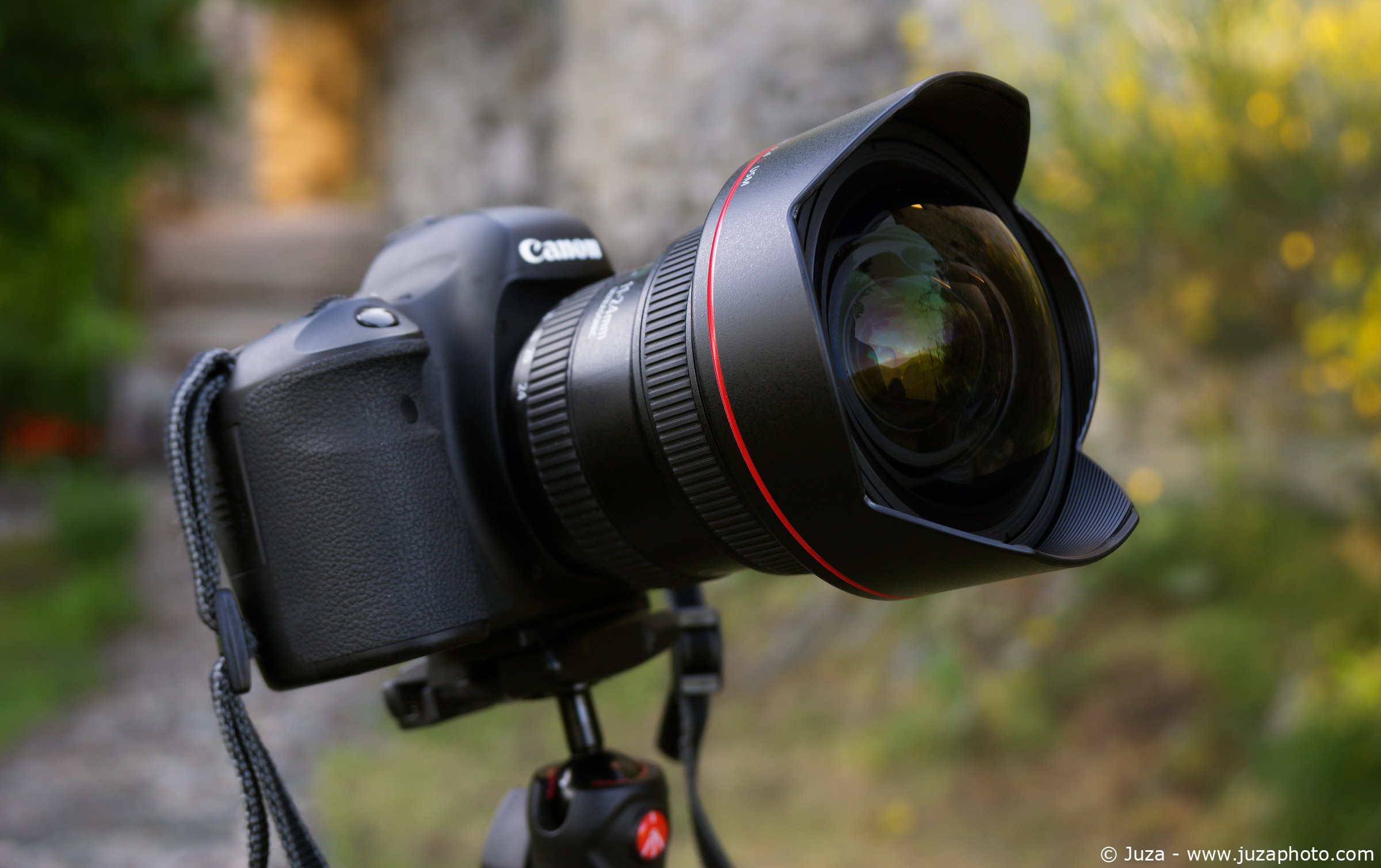
Extreme Wide Angles: a bit of history
Making a super wide is really simple: fisheye lenses with angle of view of 180 degrees or more have been around for decades. But making a rectilinear wide-angle, that is a wide-angle without barrel distortion, is way more difficult: until few years ago, the most extreme rectilinear wide was the 14mm. A real pioneer in this field has been the Nikon 13mm f/5.6, a rectilinear wide-angle from 1975 that hold the record of the widest wide for almost 30 years, until the Voigtlander 12mm f/5.6 announced in 2000 and the Sigma 12-24mm of 2003. There are many lenses for APS-C with shorter focal length, but keep in mind that their angle of view must be multiplied by 1.5x, so for example the 10-20mm lenses for APS-C are much less extreme than the 12-24mm for fullframe, because they have the angle of view of a 15-30mm.
The Canon 11-24mm, announced in 2015, is the new record holder. At 11mm it has an angle of view of 126 degrees; for comparison, the Sigma 12-24 has an angle of 122 degrees and the Nikon 14-24 has 'only' 114 degrees. The price to pay for this exceptional angle (other than the 3000$) is a not very bright aperture and a lot of weight. In the following illustration, you can see the difference between 11, 12 and 16mm in practice.
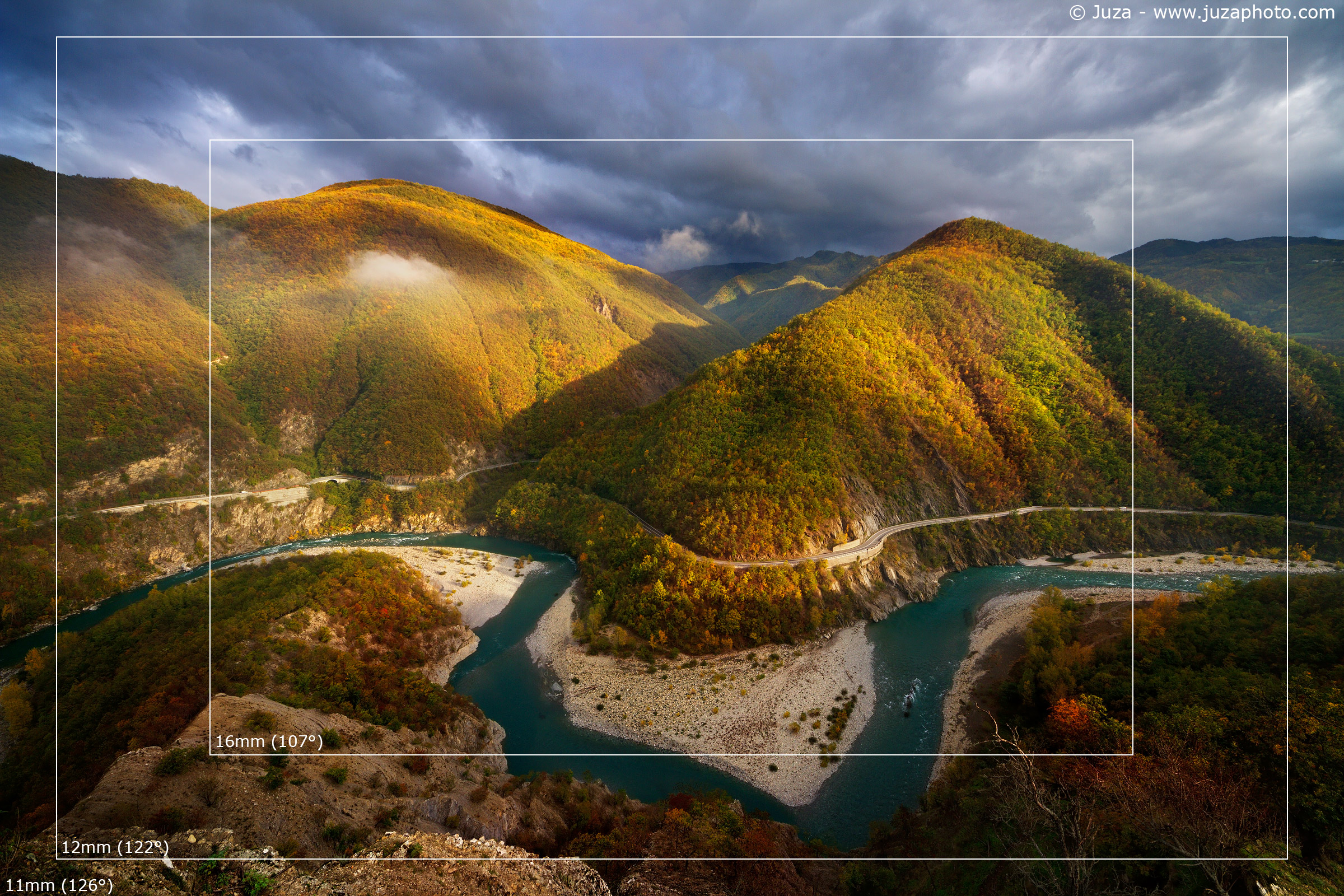
The Canon 11-24: an Heavy Weight
This lens is impressive in every respect. It is one of the heaviest wide-angle that you can buy: at 1180g, it weight as much as my whole landscape setup (Sony A5100 + Sigma 8-16 + Sony 16-70, that all together weight 1150g). And it is big! At 108mm (diameter) x 132mm (length), it is one centimeter larger than the big Nikon 14-24 f/2.8, and it dwarfs the Canon 16-35 f/2.8 that measures 'just' 89x112mm and weights half of the 11-24. Another record is the price, at about 3000$ it is way more expensive than any other Canon and Nikon wide-angle.
The built quality is, as expected, very first rate; the lens is weather sealed for maximum resistance to the elements. It is not only tough, it is also beautiful: the immense, curved front lens element is a joy for the eyes, it is a really marvelous piece of glass. The lens is protected by a large built-in, non removable, hood; of course it is not possible to mount filters. Next to the hood there is the focus ring; this lens has fast and silent USM autofocus with full time manual focus. The only missing thing is image stabilization; sadly Canon was not able to squeeze IS inside this lens, it would have made it even bigger and heavier.
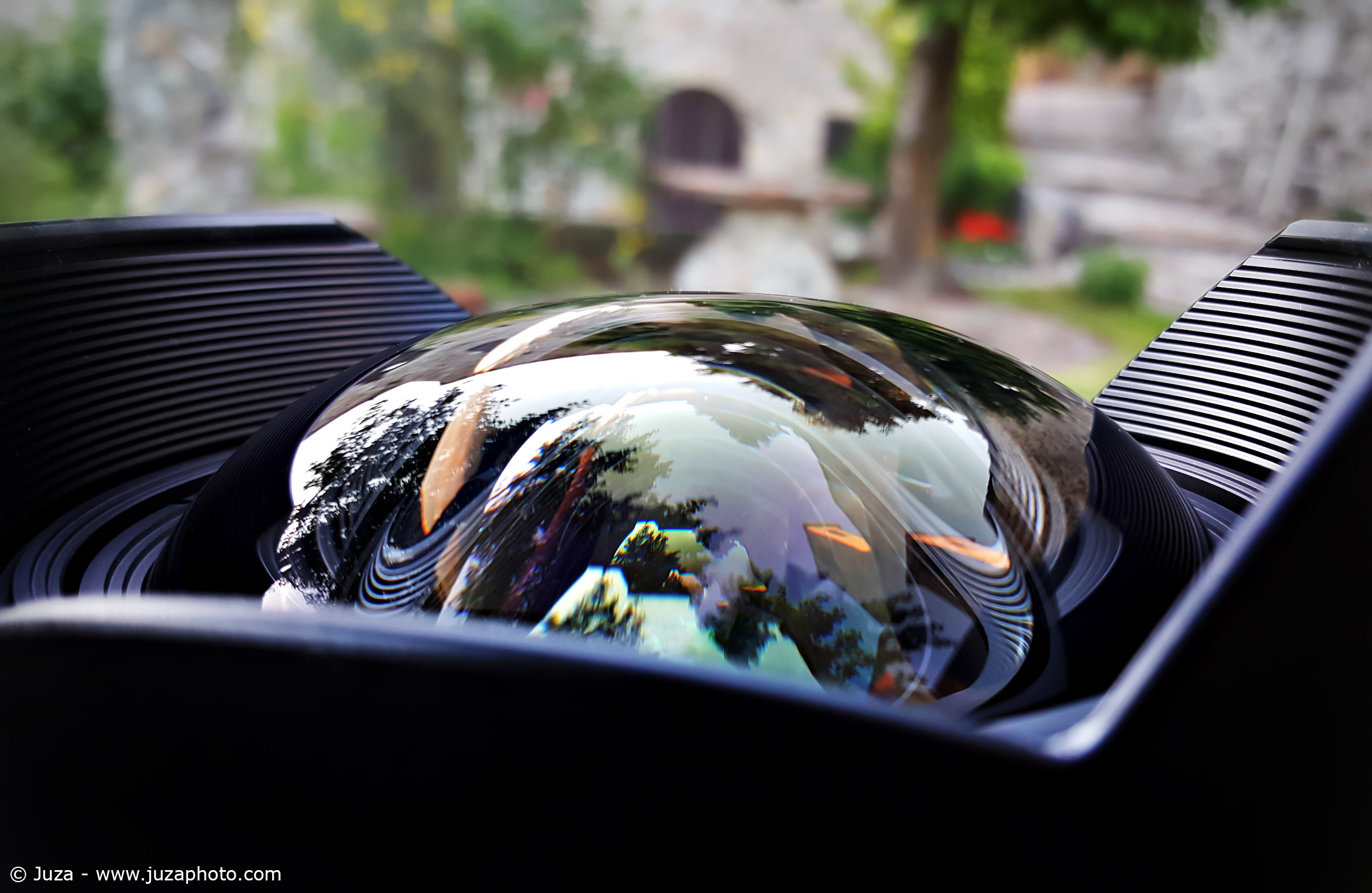
The zoom ring allows to choose the desired focal length between the insane 11mm and the much more common 24mm; you will likely keep it most of the times on 11mm, because it is the only purpose of this lens: if you don't need the most extreme angles, there are much cheaper and better alternatives, as the Canon 16-35 f/4 (one third the price, half the weight and even better image quality).
Image Quality (and comparison with the Sigma 8-16)
Needless to say, from a $3000 lens it is reasonable to expect excellent image quality. The 11-24mm does not disappoint: in my opinion, it is the second best wide-angle ever made by Canon. It is light years better than the lousy Canon 16-35 f/2.8 (I have used that lens several times and I have always been disappointed by the lack of sharpness in the corners, even when stopped down); even at f/4 it is better than the 16-35 f/2.8 at f/8 or f/11. It is not on the first place of the podium only because two years ago Canon created the awesome 'sharpness-monster' 16-35mm f/4 IS, that surpass even the new 11-24. That said, the 11-24 comes close to the 16-35 f/4 and for sure you won't be disappointed on the 18-20-22 megapixels sensor of current Canon DSLRs; in future I'm going to test it on the 50 megapixels Canon 5Ds, to see how it performs at this resolution.
Here you can see some 100% crops from untouched images; for comparison I have taken the same photos with its 'poor man' equivalent: the Sigma 8-16mm + Sony A5100 combo costs just 900 euros (vs. the 4500 euros of 11-24 + Canon 6D), and it offers a similar angle of view, so I was curious to see how it compares in terms of image quality.
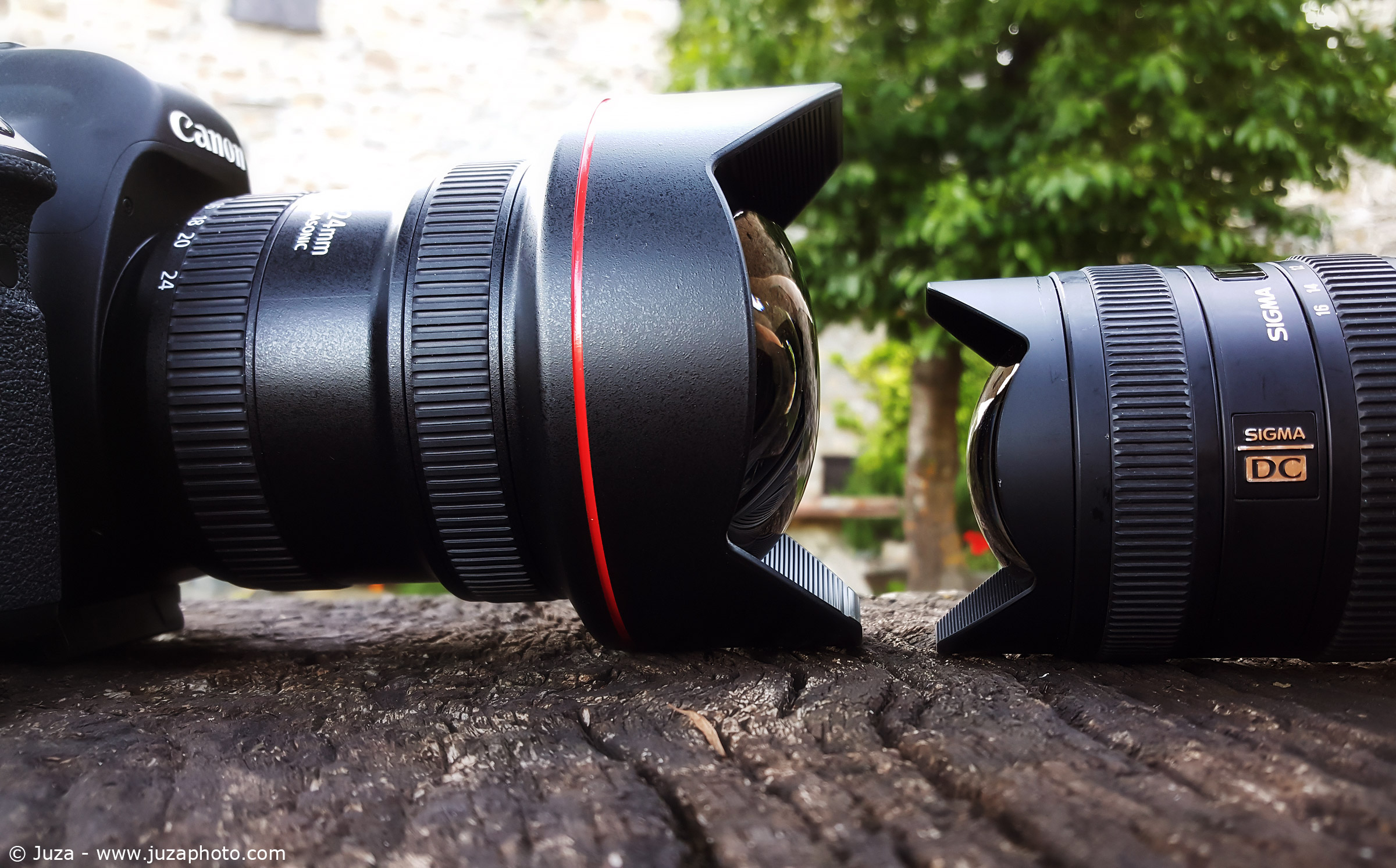
Let's begin from the center crops.
In the center, the Canon 11-24 is razor sharp even wide open; at f/11, one of the apertures that I use most often in landscape photography, the image quality in the center is actually a little worse due to diffraction, but still fully usable. The Sony A5100 + Sigma 8-16 combo is not bad as well, but it does not match the outstanding performance of the Canon: even tough the amount of detail is similar, the Canon has more contrast, so the photo has a more vivid, tridimensional look. Now, let's see the corners.
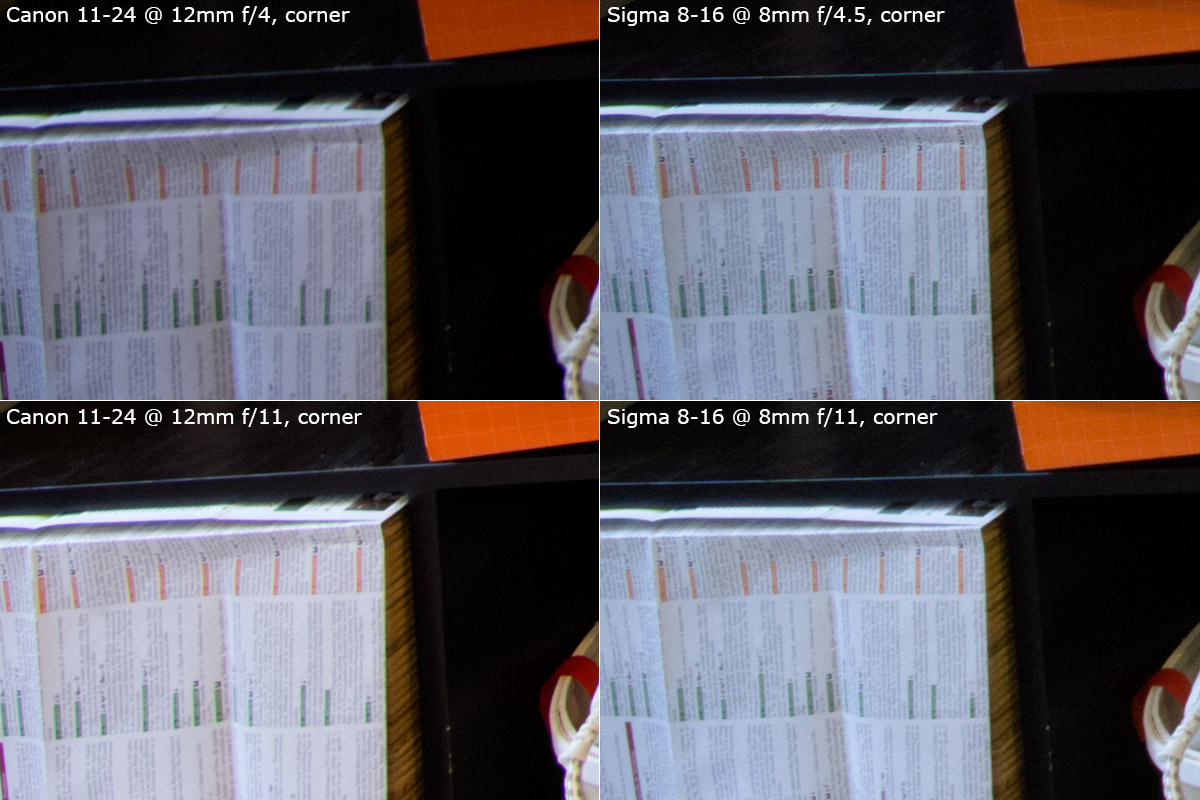
This was a bit a surprise - wide open, the Sigma is a bit better; it has less chromatic aberration and more sharpness. The chromatic aberration can be easily removed with software, but clearly the Canon suffers a bit in the corners; while it is not an issue on the 20 megapixel sensor of the Canon 6D, it may not be sharp enough for the 5Ds (at least wide open in the corners). The sharpness in the corners improves noticeably by stopping down to f/11; at this aperture the Canon and the Sigma are on par in terms of detail, but the Canon wins thanks to the higher contrast.
Full size samples and conclusion
The following images can be downloaded at full size to see how this lens perform in practice; they have been taken with the Canon 6D and post processed with Photoshop CC.

Canon 6D, Canon EF 11-24mm f/4 L USM a 11mm, 1/100 f/8.0, ISO 800 (
download at full res).

Canon 6D, Canon EF 11-24mm f/4 L USM a 24mm, 1/100 f/11.0, ISO 100 (
download at full res).

Canon 6D, Canon EF 11-24mm f/4 L USM a 11mm, 0.4 sec f/16.0, ISO 200 (
download at full res).

Canon 6D, Canon EF 11-24mm f/4 L USM a 11mm, 1/25 f/8.0, ISO 800 (
download at full res).
The Canon 11-24 is the new king of wide angles, but it is not an obvious choice for every landscape photographer. If you can sacrifice the focal lengths between 11 and 15, the
Canon 16-35mm f/4 L IS offers even better image quality, much lower weight, filter compatibility, smaller size and image stabilization at less than one third of the price, but... the difference of angle of view between 11 and 16 is huge, it is not a small sacrifice.
If, instead, you want the widest wide at any cost, the
Canon 11-24mm f/4 L will make you happy - the reward of all your efforts will be unique photos that would have not been possible with a 16mm.
One last alternative are the Sigma: the
Sigma 8-16mm f/4.5-5.6 if you use APS-C cameras or the
Sigma 12-24mm f/4.5-5.6 II if you use fullframe. They don't have the built quality and the image quality of the Canon (even though the difference is quite small), but they are still very good for their price, and they are much smaller and lighter.
Risposte e commenti
Che cosa ne pensi di questo articolo?
Vuoi dire la tua, fare domande all'autore o semplicemente fare i complimenti per un articolo che ti ha colpito particolarmente? Per partecipare iscriviti a JuzaPhoto, è semplice e gratuito!
Non solo: iscrivendoti potrai creare una tua pagina personale, pubblicare foto, ricevere commenti, partecipare alle discussioni e sfruttare tutte le funzionalità di JuzaPhoto. Con oltre 256000 iscritti, c'è spazio per tutti, dal principiante al professionista.
| inviato il 03 Aprile 2017 ore 12:01
Professional review and clear conclusions! |
| inviato il 14 Agosto 2017 ore 11:22
Dear Juza, Thanks a lot for the review. It's very valuable for choice of lens. |





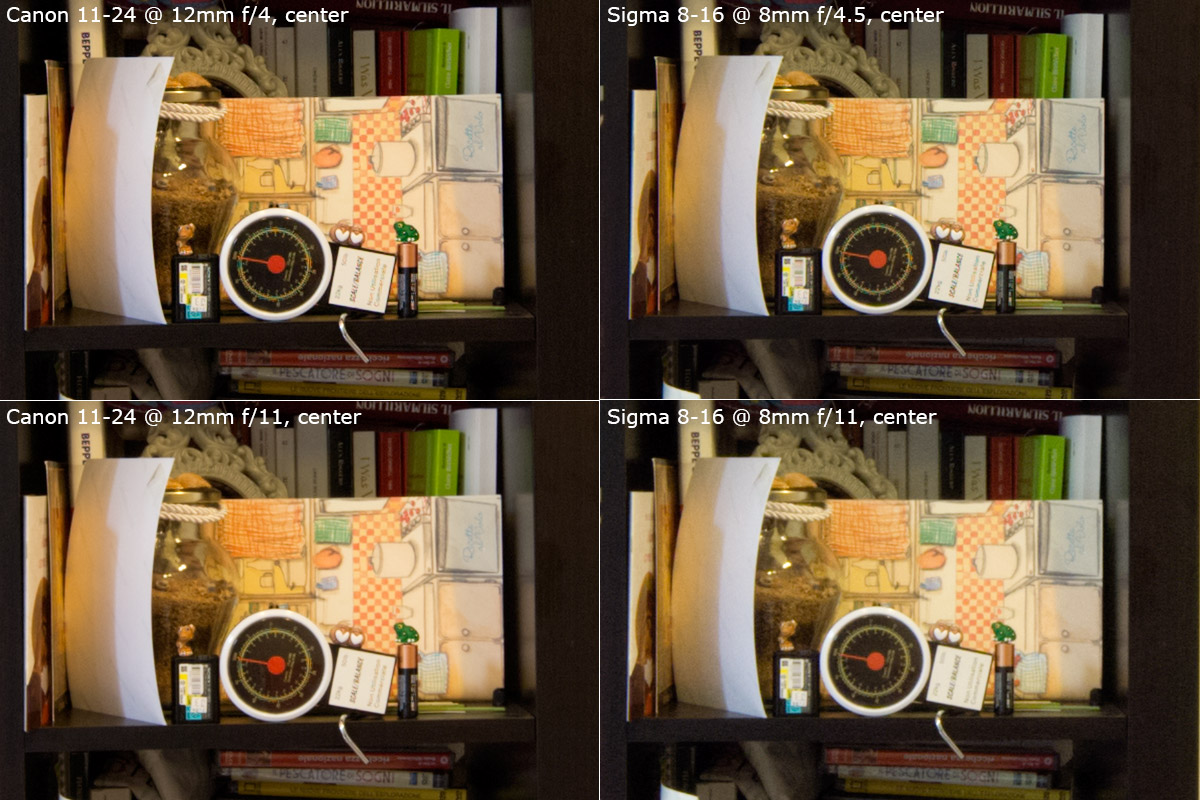

 Canon 6D, Canon EF 11-24mm f/4 L USM a 11mm, 1/100 f/8.0, ISO 800 (download at full res).
Canon 6D, Canon EF 11-24mm f/4 L USM a 11mm, 1/100 f/8.0, ISO 800 (download at full res).  Canon 6D, Canon EF 11-24mm f/4 L USM a 24mm, 1/100 f/11.0, ISO 100 (download at full res).
Canon 6D, Canon EF 11-24mm f/4 L USM a 24mm, 1/100 f/11.0, ISO 100 (download at full res).  Canon 6D, Canon EF 11-24mm f/4 L USM a 11mm, 0.4 sec f/16.0, ISO 200 (download at full res).
Canon 6D, Canon EF 11-24mm f/4 L USM a 11mm, 0.4 sec f/16.0, ISO 200 (download at full res).  Canon 6D, Canon EF 11-24mm f/4 L USM a 11mm, 1/25 f/8.0, ISO 800 (download at full res).
Canon 6D, Canon EF 11-24mm f/4 L USM a 11mm, 1/25 f/8.0, ISO 800 (download at full res).  JuzaPhoto contiene link affiliati Amazon ed Ebay e riceve una commissione in caso di acquisto attraverso link affiliati.
JuzaPhoto contiene link affiliati Amazon ed Ebay e riceve una commissione in caso di acquisto attraverso link affiliati.